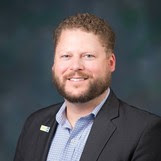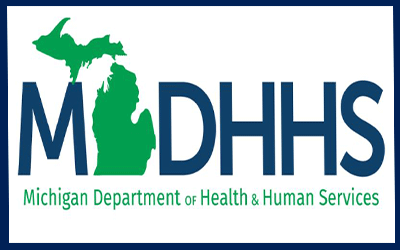
by Becky Andrus | Aug 1, 2022 | Health and Wellness

Press Release
FOR IMMEDIATE RELEASE: July 29, 2022
CONTACT: Bob Wheaton, 517-241-2112, WheatonB@michigan.gov
MIHealthyLife will strengthen health care coverage for Michiganders
MDHHS wants to hear from the public on improving Medicaid prior to
selecting health plans
LANSING, Mich. – The Michigan Department of Health and Human Services (MDHHS) is announcing MIHealthyLife, an initiative to strengthen Medicaid coverage by seeking public input as the department rebids its Medicaid health plan contracts.
“Under the banner of MIHealthyLife, MDHHS seeks to bring together the investment, creativity and commitment of the department and its partners – including health plans, providers and communities – to create a more equitable, coordinated and person-centered system of care dedicated to ensuring Michiganders a healthier future,” said MDHHS Director Elizabeth Hertel.
Medicaid and the Healthy Michigan Plan provide health care coverage to approximately 2.2 million Michiganders, including low-income adults, children, pregnant women, elderly adults and people with disabilities. These plans are key to achieving the MDHHS mission to improve the health, safety and prosperity of residents. Through this online survey, MDHHS hopes to receive input from people currently enrolled in Medicaid and their families; advocacy groups; community-based organizations; federally recognized Michigan Indian tribes; providers of health care, behavioral health, dental care and other providers; health systems; health plans and other interested parties to identify opportunities for innovation and improvement in the services and supports provided by the Medicaid health plans.
Survey questions seek feedback on broad priorities or strategic pillars – which are principles that will guide the state’s policy and program areas to assist in determining where the state should focus its efforts. Examples of pillars include giving all children a healthy start, reducing racial and ethnic health disparities and using data to drive outcomes.
Feedback will help guide planning and decision-making in preparation for the implementation of new Medicaid health plan contracts, as well as other MDHHS efforts to improve the health of residents served by the programs.
Survey responses must be submitted through the online survey, no later than 5 p.m., Aug. 26.
For more information, visit MIHealthyLife. All procurement-related questions can be sent to mdhhs-mihealthylife@michigan.gov. |

by Becky Andrus | Aug 1, 2022 | Transportation
|
With $110 million to access, Michigan submits an EV charging plan
The Bipartisan Infrastructure Law signed by President Biden in late 2021, among many things, established a National Electric Vehicle Infrastructure Formula Program (“NEVI Formula”) to provide funding to states to strategically deploy electric vehicle (EV) charging infrastructure and to establish an interconnected network to facilitate data collection, access, and reliability.
In order to access those federal funds, in Michigan’s case, $110 million, states are required to submit a plan to the federal government. MDOT submitted the plan on Thursday, July 28, but the development involved several state agencies and other partners.
Listen now: https://www.buzzsprout.com/1374205/11048860-with-110-million-to-access-michigan-submits-an-ev-charging-plan

This week’s Talking Michigan Transportation podcast features a conversation with two of the people who worked on the plan:
- Niles Annelin is a policy section manager at MDOT and spearheaded the department’s efforts on the plan.
- And Judd Herzer, director of strategic policy at the Michigan Department of Labor & Economic Opportunity (LEO) and the Office of Future Mobility and Electrification.

Among the most vital themes emphasized in the plan is equity. Annelin talks about the extensive efforts the team took to ensure to maximize benefits to disadvantaged communities. Herzer explains how a work force development initiative serves that goal.
Specifically, the plan says the state will seek to “maximize benefits to disadvantaged communities, as well as rural and underserved communities, in alignment with the Justice40 Initiative” and will “foster a diverse pipeline of workers in EV-related careers” and “equity-driven workforce training.”
|

Other highlights from the Michigan NEVI Plan include:
- A strategic vision for how Michigan will use its $110M NEVI funds to “develop a safe, equitable, reliable, convenient, and interconnected transportation electrification network that enables the efficient movement of people, improves quality of life, spurs economic growth, protects Michigan’s environment, and facilitates data collection.”
- Strategic goals to “reduce GHG emissions economy-wide by 28% below 2005 levels by 2025, en route to achieving carbon neutrality by 2050; and build the safe, convenient, affordable, reliable, and equitable infrastructure necessary to support two million EVs on Michigan roads by 2030.” A goal which supports the governor’s MI Healthy Climate Plan
- That the Plan was developed with the input of over 200 stakeholder entities, 10 state agencies, and the general public.
That the State will utilize its existing programmatic infrastructure through Charge Up Michigan (EGLE) to administer NEVI funds for Alternative Fuel Corridor buildout of a safe, reliable, accessible, and commercially viable charging network.
|
Podcast photo: A vehicle being charged.
First portrait: Niles Annelin, MDOT policy section manager.
Second portrait: Judd Herzer, director of strategic policy at the Michigan Department of Labor & Economic Opportunity and the Office of Future Mobility and Electrification.
|
|
|
|

by Becky Andrus | Jul 27, 2022 | Regional News

Gov. Whitmer Statement on Senate Passage of CHIPS+ Act
Bipartisan legislation will face the chip crisis head-on, lower costs, shore up national security, boost domestic manufacturing, create and protect tens of thousands of good-paying jobs
LANSING, Mich. – Governor Gretchen Whitmer issued the following statement after the United States Senate passed legislation including the Creating Helpful Incentives for the Production of Semiconductors for America (CHIPS) Act.
“The Senate’s bipartisan passage of the CHIPS Act is a win for Michigan’s workers, manufacturers, and consumers.
“This game-changing bill will make once-in-a-generation investments to set up the United States for decades of economic growth by bringing this vital supply chain home, creating and protecting tens of thousands of good-paying jobs, and lowering costs for families.
“I am grateful to Senator Stabenow and Senator Peters for leading on this issue in the Senate and working across the aisle to get it done. When it is signed into law, the CHIPS+ Act will shore up our supply chain and support companies based in Michigan including our auto industry, homegrown chip manufacturer Hemlock Semiconductor, and other high-tech firms including SK Siltron and KLA.
“In the days ahead, I am confident that thanks to the strong support of our Michigan delegation, the House of Representatives will pass this bill, and I urge them to send it to the president’s desk as quickly as possible so we can get the incentives laid out in the legislation out the door, build on Michigan’s economic momentum, and ultimately lower costs for Michiganders. I am proud that we are showing the world that the United States is the place to build the future. Let’s keep moving Michigan forward.”
The CHIPS+ Act would fund $52 billion in incentives to boost domestic semiconductor production and research, $2 billion of which would be dedicated to incentivizing production of the “mature node” semiconductors used by automakers and parts suppliers. Mature node chips are also used in medical devices, agricultural machinery like farm tractors and combines, as well as radiation-proof chips required by our national defense industrial base.
The CHIPS+ Act would provide a new, powerful tool in Michigan’s economic development toolbox. Increasing domestic chip production near automakers and other manufacturers will spur innovation, reduce inefficiencies, and avoid costly delays, helping Michigan attract long-term, sustainable investments from companies around the world.
Late last year, the Michigan Legislature, businesses, labor, and utilities worked with Governor Whitmer to pass bipartisan economic development legislation that helped Michigan land a $7 billion investment from GM creating and retaining 5,000 good-paying jobs, and earlier this year, Ford invested $2 billion creating 3,200 jobs. Signing the CHIPS+ Act into law will pave the way for more transformational projects that will invest billions into our communities and create tens of thousands of good-paying jobs.
Semiconductor chips are a vital component of many products used by people every day. The global shortage of these chips, exacerbated by the pandemic and supply chain constraints, has impacted people and industries across the country from auto manufacturing to consumer electronics, home appliances, medical devices, agriculture, defense and more. These shortages have resulted in reduced production and in some cases, idled plants, impacting more than 575,000 auto-related American jobs. In 2021, automakers in North America lost an estimated 2.2 million vehicles, equaling over 3,000 days of work.
This means workers with less income, higher prices at the store, less products for consumers to buy and an ever-growing dependence on foreign supplies. In the long run, increasing domestic production of chips will protect and create jobs, strengthen our supply chain, and grow the economy. Fully funding the CHIPS+ Act will bring chip manufacturing back home, creating and protecting thousands of good-paying jobs, growing America’s economy, and lowering costs for families.
|

by Becky Andrus | Jul 27, 2022 | Health and Wellness
Press Release
FOR IMMEDIATE RELEASE: July 27, 2022
CONTACT: Chelsea Wuth, 517-241-2112, [email protected]
July 28 is World Hepatitis Day
MDHHS encourages hepatitis B and C testing during pregnancy and among infants born to people with hepatitis infection
LANSING, Mich. – The Michigan Department of Health and Human Services (MDHHS) is recognizing World Hepatitis Day on Thursday, July 28 to highlight the importance of hepatitis B and C testing during pregnancy, and among infants born to people infected with hepatitis B (HCB) or hepatitis C (HCV).
“World Hepatitis Day is an opportunity to encourage all eligible Michiganders to get tested for hepatitis B and C, as testing is critical and important for early detection and treatment,” said Dr. Natasha Bagdasarian, MDHHS chief medical executive. “Many infected individuals can live decades without experiencing any signs or symptoms. Left untreated, hepatitis B and C infections can cause severe liver damage.”
HBV is transmitted from person to person through the contaminated blood or body fluids of a person who has the virus, such as through unprotected sex and from an HBV-infected person to their infant at birth (perinatal HBV). The most effective way to prevent HBV infection is to get vaccinated. The Advisory Committee on Immunization Practices recommends hepatitis B vaccination among all infants, unvaccinated children under 19 years of age, adults ages 19 through 59 years, and adults ages 60 years and older with risk factors for HBV.
HCV is a blood-borne pathogen that spreads through contact with blood from an individual who is infected. This includes through sharing needles or equipment used to inject or prepare drugs, occupational exposures, unregulated tattooing, sharing personal care items contaminated with infectious blood (e.g., razors or toothbrushes) and from an HCV-infected person to their infant at birth (perinatal HCV). There is no vaccine to prevent HCV, however, there are effective medications to cure an individual of their HCV infection.
The Centers for Disease Control and Prevention (CDC) recommends hepatitis B testing during each pregnancy. HBV vaccine is also recommended among pregnant persons who are identified as being at-risk for HBV infection during pregnancy. The HBV vaccine contains no live virus and there is no apparent risk of adverse events to developing fetuses when the vaccine is administered during pregnancy. The CDC also recommends HCV testing among all adults ages 18 and older, and among pregnant people during every pregnancy, regardless of age.
People who are HBV or HCV positive during pregnancy should seek follow-up care in the postpartum period for evaluation and treatment management in addition to testing of their newborn
For more information, visit the Hepatitis, Syringe Service Program or We Treat Hep C webpages.

by Becky Andrus | Jul 27, 2022 | Regional News

Governor Whitmer Announces $321 Million Investment in 1,650 Michigan Communities Supporting Infrastructure, Economic Growth
Federal funding from American Rescue Plan will help local governments deliver essential services
LANSING, Mich. – Today, Governor Gretchen Whitmer announced more than 1,650 communities in Michigan will receive more than $321 million to help them invest in infrastructure, grow their economies, and continue delivering essential services as part of the second batch of federal American Rescue Plan Act (ARPA) Coronavirus Local Fiscal Recovery Fund payments.
“This funding will empower over 1,650 communities across Michigan continue getting things done that make a real difference in people’s lives,” said Governor Whitmer. “As we focus on growing our economy and creating good-paying jobs, today’s over $321 million in funding will help counties, cities, villages, and townships across the state invest in local roads and bridges, support essential workers, and protect safe drinking water. Local officials have a once-in-a-lifetime opportunity to make lasting investments in the kitchen-table issues that matter most. Let’s keep working together to get things done.”
The funding provided to counties, cities, villages and townships across the state can be used to respond to the effects of the COVID-19 pandemic, bring back jobs, provide premium pay to essential workers, make up for lost revenue or invest in water, sewer or high-speed internet infrastructure. Recipient local units of government have until 2024 to identify projects and obligate funds.
Previously, the first half of Coronavirus Local Fiscal Recovery Fund payments totaling more than $321 million was distributed to smaller communities within the last year. In total, ARPA provided more than $642 million in Coronavirus State and Local Fiscal Recovery Funds to Michigan’s smaller communities.
The Michigan Department of Treasury worked with local government partners and local communities to provide technical assistance and education through webinars, phone calls and certified letters to ensure local officials would not miss the opportunity to claim their allotted federal funds. If a local community received payments from the first round, no further action is required from local officials.
“My team is ready to continue to assist local communities receiving this important aid,” said State Treasurer Rachael Eubanks. “Local officials are encouraged to reach out to our team if they encounter issues receiving a payment.”
Details about the first and second batch of state Treasury Department disbursements to smaller communities are available. To learn more about the program, go to Michigan.gov/ARPA.
“The village of Calumet has received $72,195.96 in American Rescue Act Plan funds,” said Amber Goodman, Calumet Village Manager. “These funds are vital to strengthen the community and will be offsetting costs associated with employee salaries. The America Rescue Act Plan funds have provided a needed boost to the community.”
“The city of Gaylord is utilizing its ARPA funds for a utility upgrade project,” said Kim Awrey, Gaylord City Manager. “Over the last few years, we have seen significant development on the East side of town. The Pines45 apartment complex is nearing completion and construction has started on a Luxury RV Park in the same area. The sanitary sewer line servicing this area is undersized and requiring an upgrade prior to the RV Park being able to open. Under normal circumstances, the city would have had to choose between this project and the proposed project laid out in our Capital Improvement Plan. The receipt of ARPA funds allowed the city to move forward with both projects this summer.”
“The infusion of ARPA funds will allow the city of DeWitt to extend sanitary sewer to several homes in DeWitt currently served by aging septic systems,” said Dan Coss, DeWitt City Manager. “The expansion of this critical infrastructure will aid in the protection of one of the most valuable assets in Clinton County and city of DeWitt, the Looking Glass River. In addition, a portion of the ARPA funds will allow DeWitt to increase our 2023 paving projects to include additional streets that would have otherwise been delayed to future years.”
“The village of Dansville is very thankful for the ARPA funds,” said Mike Stolz, Dansville Village President. “It will allow us to upgrade some of our technology and systems that we use and also help us with our infrastructure needs.”
“The benefit of ARPA funds in Buchanan Charter Township will be recognized in broadband expansion to our unserved and underserved areas,” said Malinda Cole-Crocker, Buchanan Charter Township Supervisor. “The economic boost to the community through broadband will be priceless.”
“While Allendale Charter Township is still in the process of narrowing down our list of uses, we see several needs in the community that can be addressed with our ARPA funds,” said Adam Elenbaas, Allendale Charter Township Supervisor.
“The ARPA funds have been used to provide a professional fire assessment study that, once acted on, will greatly improve fire suppression services in Harper Woods,” said John Szymanski, Harper Woods Finance Director. “Additionally, we are using the funds to make one time building improvements on behalf of our first responders and redesigning service delivery models to include 24-hour duty shifts for police officers that will effectively double the amount of visible patrols in the city.”
“The village received a little over $186,000 for our ARPA funds,” said Sue Kohn, Standish Village Treasurer. “We are engaged in a new water and sewer project in the White’s Beach area in Standish Township, Arenac County. We will have some extra costs for a Water Tower and a Lagoon, so those extra funds will take some burden off of the citizens in that area.”
“Bangor Charter Township has approved to spend $1.03 million of its ARPA funds to replace drinking water lines, including replacing cast-iron lines and the current four-inch lines with eight-inch lines,” said Glenn Rowley, Bangor Charter Township Supervisor. “This will ensure safe drinking water for our residents, and the replacement of undersized piping will guarantee proper pressure in the lines to the hydrants for fire suppression. The township board has also approved the purchase of two moist heat decontamination units, totaling $15,900, for our fire department.”
|











